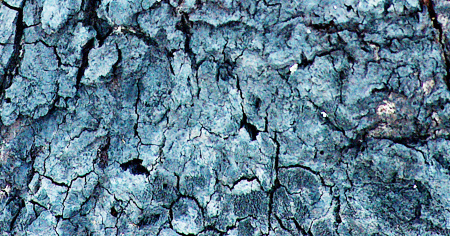Analysis of Torrefied Biomass

Background
The torrefaction of biomass can be considered to be a mild form of pyrolysis. It involves heating the biomass, in the absence of oxygen. Typically, temperatures between 200 and 320 degrees Celsius are used.Torrefaction will remove moisture and volatiles from the biomass, with the types of constituents that are removed, and their extent of removal, being dependent on the temperature used and the duration of the process.
Analysis of Torrefied Biomass at Celignis
Celignis Analytical can determine the following properties of Torrefied Biomass samples:
Sugars (Monosaccharides)
Sugar Alcohols and Uronic Acids
Lignin and Extractives
- Lignin (Klason)
- Lignin (Klason - Protein Corrected)
- Lignin (Acid Soluble)
- Acid Insoluble Residue
- Extractives (Ethanol-Soluble)
- Extractives (Water-Soluble)
- Extractives (Exhaustive - Water then Ethanol)
- Lignin S/G Ratio
- Extractives (Water-Insoluble, Ethanol Soluble)
- Protein Content of Acid Insoluble Residue
- Carbon Content of Acid Insoluble Residue
- Hydrogen Content of Acid Insoluble Residue
- Nitrogen Content of Acid Insoluble Residue
- Sulphur Content of Acid Insoluble Residue
Amino
Acids
Thermal Properties
- Moisture
- Ash
- Ash (Acid Insoluble)
- Carbon
- Hydrogen
- Nitrogen
- Sulphur
- Oxygen
- Volatile Matter
- Fixed Carbon
- Gross Calorific Value
- Net Calorific Value
- Chlorine
- Ash Shrinkage Starting Temperature (Oxidising)
- Ash Deformation Temperature (Oxidising)
- Ash Hemisphere Temperature (Oxidising)
- Ash Flow Temperature (Oxidising)
- Ash Shrinkage Starting Temperature (Reducing)
- Ash Deformation Temperature (Reducing)
- Ash Hemisphere Temperature (Reducing)
- Ash Flow Temperature (Reducing)
- Thernogram - Under Nitrogen
- Thermogram - Under Air
Major and Minor Elements
Cellulose Content of Torrefied Biomass
In most biomass moisture is the first component to be volatilised as temperature increases, followed by hemicellulose, then cellulose, and eventually lignin. The relative cellulose content of the torrified biomass may be greater or less than in the original biomass, depending on the conditions of torrefaction.Click here to see the Celignis Analysis Packages that determine cellulose content.
Hemicellulose Content of Torrefied Biomass
Usually, the hemicellulose content of the torrified biomass will be less than in the original biomass.Click here to see the Celignis Analysis Packages that determine hemicellulose content.
Lignin Content of Torrefied Biomass
The lignin content of torrefied biomass is usually significantly greater than that of the original biomass. This is because, while extractives, hemicellulose, and cellulose, can be volatile under the temperatures used for torrefaction, lignin is not (to any great extent).Click here to see the Celignis Analysis Packages that determine lignin content.
Starch Content of Torrefied Biomass
It is likely that torrefaction will reduce the starch content of biomass. This is because the heat-induced depolymerization of starch to maltodextrin occurs between between 200 and 250 degrees Celcius.Click here to see the Celignis Analysis Packages that determine starch content.
Uronic Acid Content of Torrefied Biomass
Depending on the severity of the torrefaction conditions, the uronic acids that were present in the original biomass may either have been removed or retained within the residual solid biomass.Click here to read more about uronic acids and to see the Celignis Analysis Packages that determine uronic acid content.
Enzymatic Hydrolysis of Torrefied Biomass
We can undertake tests involving the enzymatic hydrolysis of Torrefied Biomass. In these experiments we can either use a commercial enzyme mix or you can supply your own enzymes.We also offer analysis packages that compare the enzymatic hydrolysis of a pre-treated sample with that of the native original material.
Click here to read more about enzymatic hydrolysis and to see the various analysis packages that we offer.
Ash Content of Torrefied Biomass
The ash content of the torrefied biomass will depend on the conditions used. In many cases the torrified biomass has a greater ash content than the original biomass.Click here to see the Celignis Analysis Packages that determine ash content.
Heating (Calorific) Value of Torrefied Biomass
Lignin has a greater heating value than hemicellulose and cellulose. Therefore, given that torrefaction removes moisture, as well as hemicellulose and cellulose (to varying degrees), and increases lignin content, it should be expected that torrefied biomass will have a greater heating value than the starting biomass. The difference between the two heating values will greaten with increased time and duration used for torrefaction.Click here to see the Celignis Analysis Packages that determine heating value.
Biomethane Potential (BMP) of Torrefied Biomass
Torrefaction is a process that increases the relative proportion of lignin in a feedstock whilst reducing the amounts of the most volatile components. As a result, a torrefied sample will be a worse feedstock for anaerobic digestion than the virgin material, with a significantly lower biochemical methane potential (BMP).Click here to see the Celignis Analysis Packages that determine the biomethane potential (BMP) and here to read more about anaerobic digestion and the most important analytes for this process.
Bulk Density of Torrefied Biomass
At Celignis we can determine the bulk density of biomass samples, including Torrefied Biomass, according to ISO standard 17828 (2015). This method requires the biomass to be in an appropriate form (chips or powder) for density determination.Click here to see the Celignis Analysis Packages that determine bulk density.
Basic Density of Torrefied Biomass
At Celignis we can determine the basic density of some suitable biomass samples. The method requires the biomass to be in an appropriate form (chips) for density determination.Click here to see the Celignis Analysis Packages that determine basic density.
| Previous Feedstock | Next Feedstock |
Go Back to List of Feedstocks.
Energy
Crops
Agricultural Residues and Wastes
Industrial Residues and Wastes
Municipal
Wastes
Biorefinery
Products






